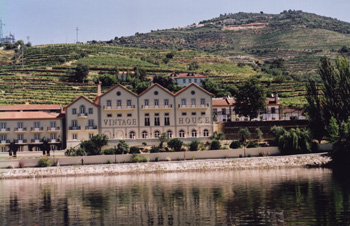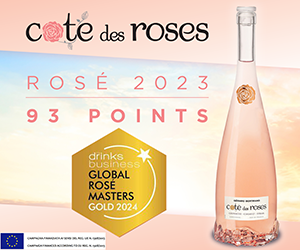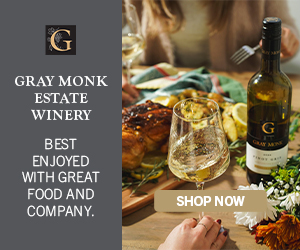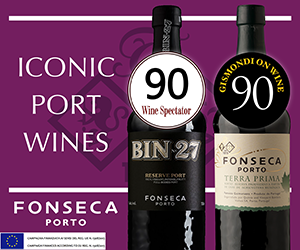The most difficult part of making and selling fine wine in the 00s is getting the rest of the world to sit up and take notice.
Where to go, who to talk with and what to say sound easy until you find yourself actually having to do it.
You only need to look at the B.C. wine industry to see how fragmented it has become since its rebirth in the late 1980s. The need for national standards has never been more urgent. Yet satisfying every last producer has never been more difficult and time consuming, nor less fruitful in terms of moving the industry forward.
Making serious wine is no longer good enough. Many regions boast excellence in the bottle and most are telling their story better, more often and to more important audiences.
Local wineries, big and small, rich and not so rich, are going to have to pull together (publicly) if they are going to make an impact outside of British Columbia. In short, B.C. desperately needs some voices to tell its story in big cities where wine matters.
I'm the biggest proponent of terroir-based, regional wine associations but first you have to be an enthusiastic member of the entire industry. You must represent the entire region before you speak to your sub-region and finally your wines.
Last week I caught up with two enterprising Portuguese producers who "get it" and, with a handful of like-minded individuals, are changing the way the world thinks about the dry red wines of the Douro.
Christiano van Zeller and Miguel Roquette travel the world to raise the profile of the Douro and its previously unknown dry red wines. They are well versed in the history of the region the historical importance of its indigenous grapes and they tell the story well.
In many ways Portuguese dry reds are much like the red wines of B.C. -- they have a history better forgotten. The difference there is that new wines, representing new thinking and new methods, are being rolled out on a global stage by the likes of van Zeller and Roquette -- and everybody is listening.
This week you are encouraged to stroll into the Portuguese section of your local wine shop in search of the latest in dry reds. Here's my update,
The DFJ Caladoc & Alicante Bouschet 2000 from Estremadura features two mostly unknown varieties: caladoc (a new French variety) and alicante bouschet (an old French crossing of Petit Bouschet and Grenache). You'll find licorice and ripe plum jam on the nose along with a smoky, vanilla, gamey scent. It is soft and round on entry with more cherry/plum fruit and fresh acidity on the palate spiked with vanilla and pepper. The finish is dry and well balanced. Serve with roast duck or lamb.
The Jose de Sousa 1999 comes from Alentejo, a region whose wine is known for its spicy, meaty, earthy aromas. Look for that and hints of black cherry jam and black plum along with soft, round, dry textures and just a dusting of tannin. There is some acidity on the finish but it's otherwise well balanced. A solid barbecue red.
Duas Quintas Douro Red 1999 hails from the Ramos Pinto group in the Douro Valley. Look for an earthy, resiny, licorice root nose with dried cherry aromas and a touch of leather and tobacco. On the palate it's very dry and slightly tannic with licorice, cherry jam and earth flavours. It is mellowing in the bottle but it needs drinking.
Another fine bet from the Douro is the Sogrape Vila Regia 2000. Spicy, peppery, rootsy aromas with some dried cherry and plum mark the nose of this great-value rustic red. It is ripe, round and very dry with moderately fresh acidity and peppery, leather, plum jam and cassis flavours. A fine value, all-round red to accompany barbecued meat.
Quinta Vale D. Maria Tinto 2001 is a giant Douro red from van Zeller. Expect spicy vanilla, peppery, black cherry, plum aromas with licorice, smoky, gamey notes. Big rich and round it will carry a meal along with its warm black cherry, licorice root flavours and sweet vanilla finish. You can serve it now with a pork roast or grilled veal chop or wait five years. Think a blend of New World Bordeaux and Old World Douro.
Quinta do Crasto Tinto 2001 is the Douro red of Miguel Roquette. It has an attractive black plum, earthy, licorice aroma with notes of tea and violet. It is round and rich with somewhat chewy tannins but it's not without finesse. Similar licorice, earthy, black plum fruit flavours mark the palate. It's a bit warm on the tongue (alcoholic) but it has fine intensity and is good overall with ripe fruit. From a top vintage in the Douro, this needs two to three years to round out.
Weekend Wine Tasting: Portuguese Reds
Wine DFJ Caladoc & Alicante Bouschet 2000, Estremadura
Price $26.99
UPC 5014313700842
Score 15.5/20
Remarks Licorice, ripe plums and smoky vanilla.
Wine Jose de Sousa 1999, Alentejo
Price $15.42
UPC 600470207000
Score 14/20
Remarks Versatile barbecue red with gamy, black cherry, smoky flavours.
Wine Duas Quintas Douro Red 1999, Douro Valley
Price $18.99
UPC 5601332005456
Score 14/20
Remarks Earthy, licorice root and dried cherries; best with rustic meat dishes.
Wine Sogrape Vila Regia 2000, Douro Valley
Price $9.56
UPC 5601012414509
Score 14/20
Remarks Spicy, dry rustic red with plum jam and cassis notes.
Wine Quinta Vale D. Maria Douro Tinto 2001, Rio Torto, Douro Valley
Price $30.90
UPC 5606545120019
Score 17/20
Remarks Delicious spicy, vanilla, black cherry and licorice -- a New World Douro red.
Wine Quinta do Crasto Douro Vinho Tinto 2001, Douro Valley
Price $20.60
UPC 5604123000678
Score 16.5/20
Remarks Four square red with spicy black plum fruit flavours.

 quicksearch
quicksearch






